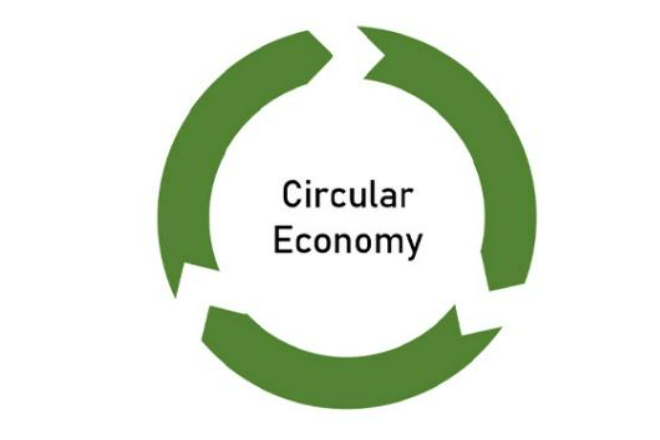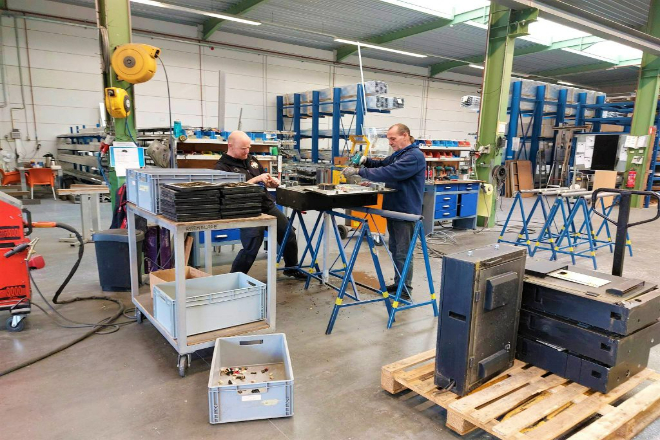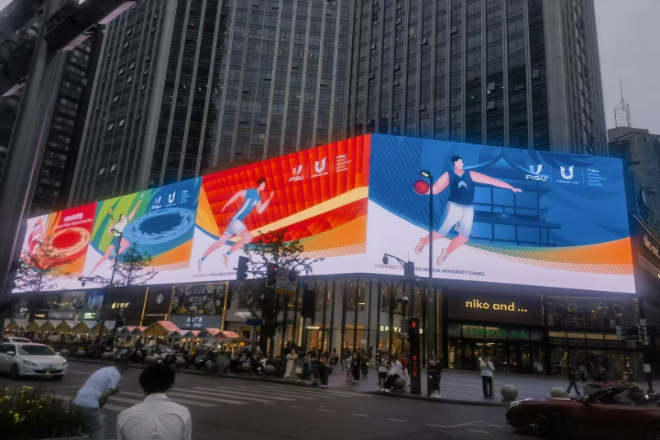Introduction

With the increasing shortage of resources and the intensification of environmental pollution, the concept of circular economy has gradually gained popularity, and people have begun to pay attention to the entire life cycle of products, including their production, use, disposal, and recycling.
So, as a representative of modern technology products, does the Affichage LED belong to the circular economy?
1. What is the circular economy?
1). Definition of circular economy
The circular economy sounds very high-end, but in fact, it is an economic model that allows us to use resources more cleverly and economically and recycle them. In simple terms, when we are producing and living, we should not just think about using new things.
We should think about whether this thing can be used less, whether it can be reused after use, or whether it can be turned into something else useful after waste. In this way, we can waste less resources, pollute the environment less, and make “Mother Earth” happier!
The circular economy emphasizes the efficient use and recycling of resources so that our economic development and environmental protection can develop together.
2). Principles of circular economy
When it comes to a circular economy, we have to mention its three major principles, referred to as the “3R principle”, which are reduction, reuse, and recycling.
- Reduction:
This principle tells us not to be so wasteful and use as little as possible. For example, when buying something, don’t be tempted at first sight, but think about whether your family really needs it.
When producing, you also have to think about whether you can use less materials to make better products. In this way, we can save a lot of resources and reduce the burden on the earth.
- Reuse:
This principle encourages us not to rush to throw away things after use but to see if they can be used again. For example, old clothes can be turned into rags and old bottles can be made into flower pots. In this way, we can produce less garbage and make the environment cleaner.
- Recycling:
This principle tells us not to rush to throw away waste things but to see if they can be turned into other useful things.
For example, waste paper can be turned into new paper, and waste metal can be turned into new metal products. In this way, we can recycle resources and make the earth’s resources more abundant.
This “3R principle” is like three good friends, helping us to achieve a circular economy. They make us pay more attention to resource conservation and environmental protection in production and life.
As long as we all follow these principles, we can make our economy greener and more sustainable and make Mother Earth more beautiful and healthier!
2. Analysis of the recyclability of LED display screens
1). Material recyclability
Speaking of the recyclability of LED display screens, we have to talk about its materials first. LED display screens are composed of many parts, such as LED lamp beads, metal frames, and circuit boards. Did you know that these materials can actually be recycled and reused?
- Perles de lampe LED :
This little guy is the highlight of the display screen, and the semiconductor material inside is a treasure. Now that technology is so advanced, semiconductor material recycling technology is becoming more and more mature.
The semiconductor materials in the used LED lamp beads can be turned into new raw materials after a series of treatments and continue to emit light and heat.
- Metal frame:
The “skeleton” of the display screen is the metal frame, which is generally made of aluminum or other metals. These metals are very valuable and easy to recycle. Scrap metal frames can be turned into new metal products after smelting and processing and recycled.
- Circuit board:
The circuit board is the “nerve center” of the display screen, and there are many metal materials in it, such as copper. These metals can also be recycled and reused, reducing the demand for new metals.
Therefore, the recyclability of the materials of LED display screens is really good. Don’t rush to throw them away after use. Recycle them and reuse them, which is both environmentally friendly and saves money!
2). Energy efficiency and energy saving
LED display screens are much more energy-efficient than traditional display screens (such as LCD and CRT)!
This is because it uses light-emitting diodes to directly emit light, and the photoelectric conversion efficiency is particularly high. Almost all electrical energy can be converted into light energy, with very little waste.
- Energy efficiency advantage:
Think about it: traditional display screens still need a backlight to illuminate the screen, which consumes a lot of electricity!
However, LED display screens don’t need it; they emit light directly, saving energy and being environmentally friendly.
- Faible consommation d'énergie caractéristiques:
The power consumption of LED display screens is really low. For the same size display screen, the energy consumption of LED is only about half that of traditional LCD.
This means that if we use LED display screens, we can consume a lot less energy, reduce carbon emissions, and reduce the burden on Mother Earth!
3). Service life and durability
LED display screens have a long service life and can be used for many years!
- Long life characteristics:
Generally speaking, the average service life of LED display screens can reach more than 100,000 hours, which is much longer than traditional LCD screens.
This means that we can use LED display screens for many years after buying them once, without frequent replacement.
- Reduce resource waste and environmental pollution:
Because LED display screens have a long service life, we don’t need to replace them frequently, which reduces the generation of waste display screens.
Did you know that waste display screens are a kind of electronic waste that is very troublesome to handle and will pollute the environment? Therefore, the long service life of LED display screens is really meaningful!
4). Upgrade and reuse potential
LED display screens are not only easy to use now but also have great potential for upgrade and reuse in the future!
- Upgrade potential:
With the advancement of technology, LED display screens can also be upgraded! For example, if a part is broken, we don’t need to replace the entire display screen.
We only need to replace the broken part. This can not only repair the display screen but also save costs and extend its service life.
- Reuse methods:
Even if the LED display screen is really broken, don’t rush to throw it away. It can also be used as a spare part to provide parts for other displays.
Or, we can be creative and transform it into art, home decoration, creative billboards, etc., so that it can continue to shine in new fields.
In short, LED display screens really perform well in terms of recyclability! Its materials are recyclable, energy-efficient, long-lasting, and have the potential for upgrading and reuse. When we choose LED display screens, we choose environmental protection and sustainability!
3. Practical case sharing of LED display screens in the circular economy

- European recycling companies:
Some companies in Europe have established a complete LED display screen recycling system, including collection, classification, disassembly, separation, and reuse.
Through advanced recycling technology and equipment, they have achieved efficient recycling and reuse of various materials in LED display screens.
- An environmental protection organization in the United States:
The organization actively promotes the recycling and reuse of LED display screens, and through publicity and education, media publicity, and other means, it improves the public’s awareness and attention to the recycling of LED display screens.
At the same time, they also cooperate with enterprises to jointly promote the construction and improvement of the LED display screen recycling system.
1). Enterprise practice
- Some LED display manufacturers:
They began to use recyclable materials in the production process to reduce the use of hazardous substances.
At the same time, they also improve product design, improve product durability and maintainability, and reduce product scrapping rates.
- Some rental companies:
They began to provide LED display rental services to reduce customers’ demand for new displays. This not only reduces customers’ costs but also extends the service life of the display and reduces resource waste and environmental pollution.
4. Challenges and countermeasures for the development of a circular economy for LED displays

1). Défis
On the road to the development of a circular economy, the LED display industry faces many challenges, which mainly come from recycling technology, cost, policy, and other aspects.
1.1). Recycling technology challenges
The recycling of LED displays involves multiple complex steps, including disassembly, classification, separation, and processing. At present, although some recycling technologies have been applied to the recycling process of LED displays, these technologies still have some shortcomings.
For example, for the separation and recycling of semiconductor materials in LED lamp beads, existing technologies may not be able to achieve efficient and lossless recycling, resulting in low recycling efficiency and resource waste.
1.2). Cost challenges
The recycling cost of LED displays is relatively high. On the one hand, since LED display screens have many components and some of them contain valuable materials such as precious metals, more manpower, material resources, and financial resources are required in the recycling process.
On the other hand, due to the long service life of LED display screens, the elimination rate is relatively low, resulting in insufficient demand in the recycling market, which further increases the recycling cost.
2). Countermeasures
In response to the above challenges, we can put forward the following countermeasures and suggestions to promote the development of a circular economy for LED display screens.
2.1). Strengthen technical research and development
The government and enterprises should increase their research and development efforts on LED display screen recycling technology to improve recycling efficiency and resource utilization.
By introducing advanced physical separation, chemical treatment, and other technical means, efficient and lossless recycling of various materials in LED display screens can be achieved.
At the same time, cooperation and exchanges with other industries should be strengthened to learn from the successful experience of other industries in recycling technology.
2.2). Improve the recycling system
Establishing a sound LED display screen recycling system is the key to promoting the development of a circular economy. The government should introduce relevant policies to encourage enterprises to participate in the recycling of LED display screens and establish a recycling network with extensive coverage.
At the same time, the management and supervision of recycling enterprises should be strengthened to ensure the standardized and orderly development of recycling work.
In addition, we can explore the establishment of a recycling deposit system for LED display screens and promote consumers to participate actively in recycling through economic means.
Conclusion
In summary, as an advanced display technology, LED display screens not only have superior performance and broad application prospects but also have significant recyclability characteristics.
Its material recyclability, energy efficiency, and energy saving, service life and durability, and upgrading and reuse potential are all excellent and conform to the basic principles and requirements of the circular economy.
Enfin, si vous souhaitez en savoir plus sur les écrans d'affichage LED, veuillez nous contacter.
